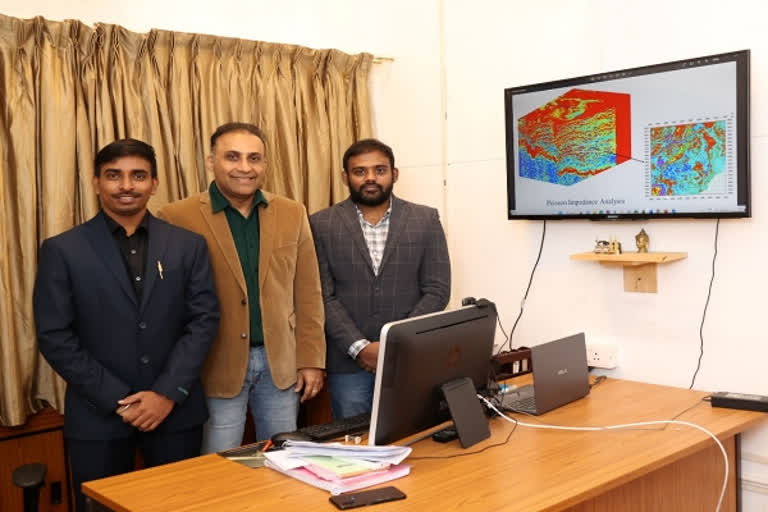Chennai: Indian Institute of Technology Madras (IIT Madras) researchers developed a statistical approach that can characterise subsurface rock structure and detect petroleum and hydrocarbon reserves. The method proposed was successful in providing critical information on the rock type distribution and hydrocarbon saturation zones in ‘Tipam formation’ located in the Upper Assam basin.
The researchers used this approach to analyse data obtained from seismic surveys and well logs from the north Assam region known for its petroleum reserve. They were able to get accurate information on the rock type distribution and the hydrocarbon saturation zones at such depth zones of 2.3 km.
Seismic survey methods and well-log data are used to understand the structure underneath the earth’s surface. In a seismic survey, acoustic vibrations are sent through the ground. As the waves hit various rock layers, they are reflected with different characteristics. The reflected waves are recorded and the underground rock structure is imaged using the reflection data. The well logs contain details of various layers of the earth seen when digging an oil well.
This research was led by Prof Rajesh R Nair, faculty, Petroleum Engineering programme, Department of Ocean Engineering, IIT Madras. The findings were published in the prestigious journal Nature Scientific Reports. Petroleum is found in the pore space of hydrocarbon-bearing underground rock formations. The identification of petroleum reservoirs in the oil-rich basins of Assam requires a survey of the rock structure of this region and the detection of hydrocarbon saturation zones in them.
Also read: Rajasthan-based IIT Bombay graduates turn barren land into an organic farm
Elaborating on the need for such research, Rajesh R Nair, Professor of the Petroleum Engineering programme, Department of Ocean Engineering, IIT Madras, said, “The challenge to imaging underground structures arises from the low resolution of the seismic images and the difficulty in correlating the data from well-log and seismic surveys. Our team at IIT Madras has developed a methodology for predicting the hydrocarbon zones from a complex well log and seismic data.”
Furthermore, Nair added, “The characterisation of subsurface structures for the detection of oil-bearing rocks involves the use of data analytics methods that establish statistical relationships between seismic data and petrophysical data obtained from well logs. These relationships help in estimating the petrophysical properties of the subsurface.”
Explaining the technical aspects of the study, Nair said, “Seismic inversion is a process that is commonly used to transform the seismic reflection data into a quantitative rock-property description of a reservoir. Our team used a type of seismic inversion, called ‘Simultaneous Prestack Seismic Inversion’ (SPSI). This analysis provided the spatial distribution of petrophysical properties in the seismic image." Nair added that India’s mega offshore bidding process of 26 blocks for producing oil, and gas is presently ongoing and such new technologies for finding new discoveries will boost the oil and gas business enormously.



